 |
|
Kansas Geological Survey Open-file Report 2003-57 |
Comparative Gas Chemistry
Comparison of the composition of the Ryersee gas with that of the large Permian gas fields to the southwest in the Hugoton embayment (i.e., Hugoton, Panoma, Byerly, Bradshaw, and Interstate fields) indicates that the Chase Group gas in the Ryersee Field is different from these larger fields. This suggests a separate origin or migrational history. The Chase Group gas from Ryersee Field has more similarity to other Permian gas fields on the Central Kansas uplift and Sedgwick basin.
Distribution of Gas Heating Values, Hugoton Embayment, Kansas |
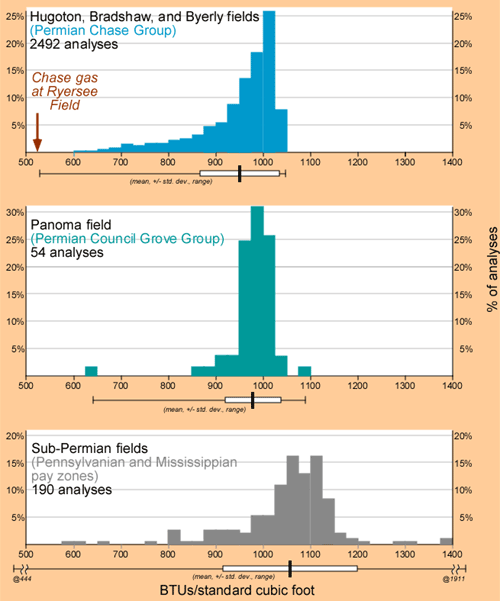 |
| Data are from published sources (mostly U.S. Bureau of Mines Information Circulars of Analyses of Natural Gases) and unpublished sources; Hugoton Field BTU data are supplemented by data from Wilkonson (1960). |
| The Ryersee Chase gas has markedly lower BTU content than Permian gas present in the giant Hugoton and Panoma gas fields 65 miles (105 km) to the southwest. |
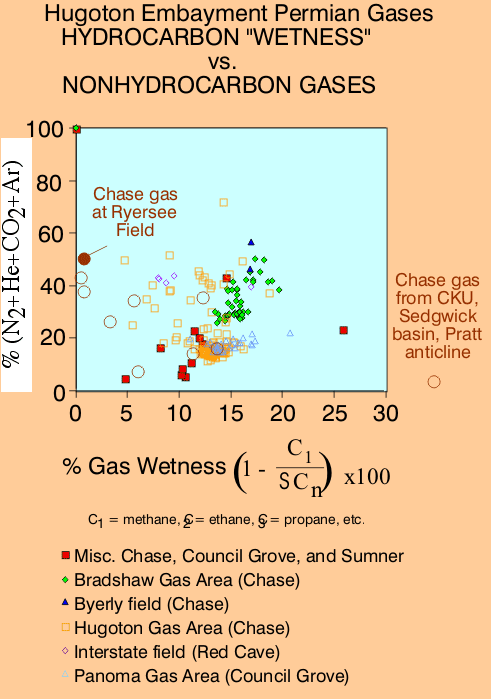 |
| A cross-plot comparison of total nonhydrocarbon gases with hydrocarbon "wetness" indicates that the Ryersee Chase gas, as well as other Permian gases on the Central Kansas uplift and Sedgwick basin, is generally drier (i.e., mostly methane), and contains more nonhydrocarbon gases than the giant Permian fields of the Hugoton embayment. |
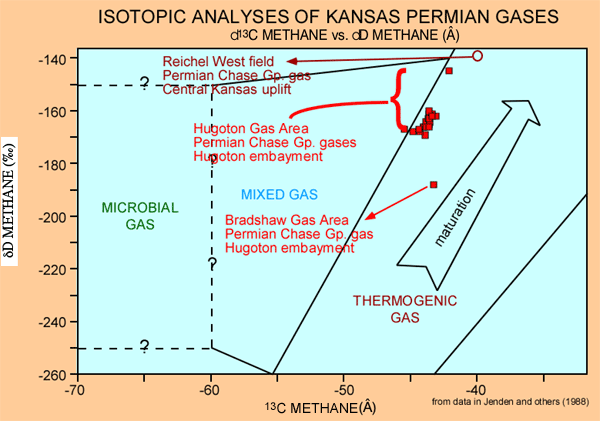 |
| Isotopic data for methane in Chase Group gases from central and western Kansas indicate these gases are thermogenic in origin. A single analysis for a Chase Group gas on the Central Kansas uplift (Reichel West Field in Rush County, 20 miles (32 km) NE of Ryersee Field) indicates that it is not isotopically similar Chase Group gases in the Hugoton embayment. |
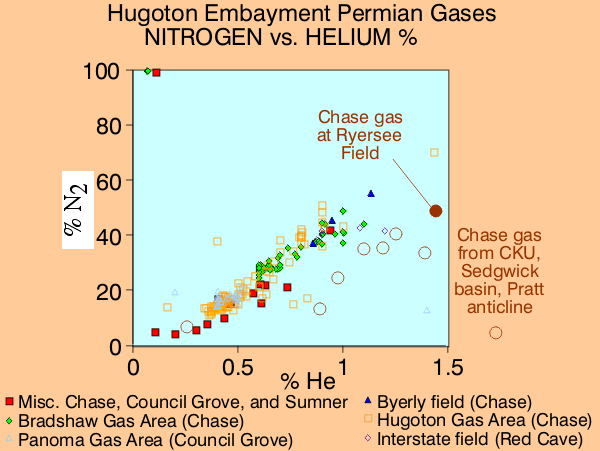 |
| The nitrogen-to-helium (N:He) ratio of Permian gases in the Hugoton embayment is relatively constant. However, Permian gases from central Kansas, including that from Ryersee Field, do not plot along the data trend for gas fields in the Hugoton embayment. This suggests a different origin, or history of migration, or both. |
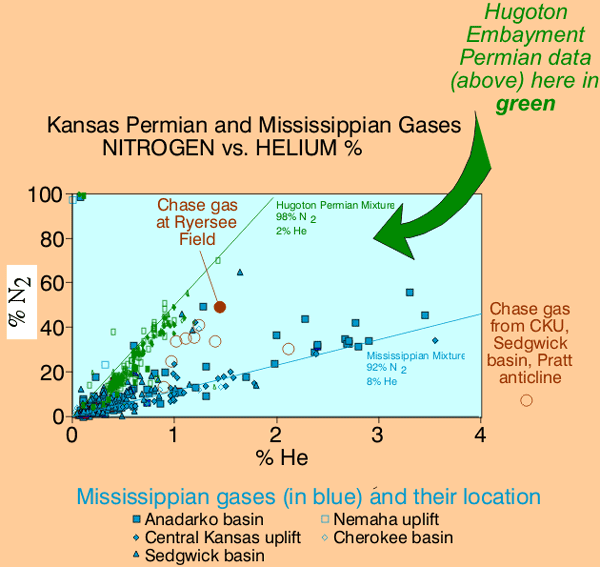 |
| Most Kansas Mississippian gases also have a relatively consistent N:He ratio, but are richer in helium than the large Permian gas fields in the Hugoton embayment. The Ryersee gas and other Permian gases on the Central Kansas uplift have N:He ratios intermediate to that of the Hugoton Permian and Mississippian gases. |
|
|
e-mail : webadmin@kgs.ku.edu
Last updated November 2003
http://www.kgs.ku.edu/PRS/publication/2003/ofr2003-57/P2-01.html